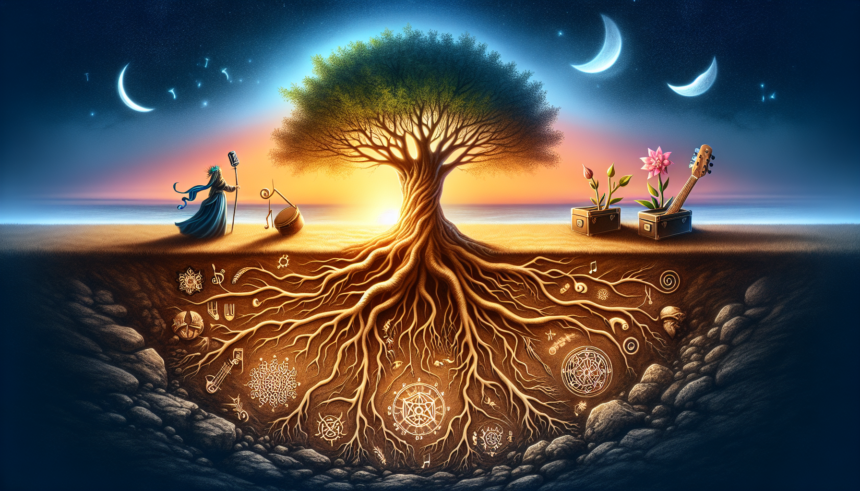The Origins of Griasdi: Tracing the Roots of the Celebration
Griasdi, often considered a vibrant and heartwarming celebration, has captivated both locals and visitors alike with its rich traditions and festive atmosphere. Originating in the heart of Austria, Griasdi is not just a mere festival; it’s a cultural phenomenon that encapsulates the spirit of community, unity, and joy. But where did it all begin? The roots of Griasdi stem from a diverse blend of historical events, local customs, and cultural significance that have evolved over the centuries.
Historical Background
The origins of Griasdi can be traced back to ancient times, when early inhabitants of the region celebrated the change of seasons and harvest cycles. These early festivities were primarily centered around agricultural milestones. They provided communities with opportunities to offer thanks for bountiful harvests, ensuring that they had enough food to survive through the harsher months.
As time went by, the festival began to take on more varied meanings and practices. During the Middle Ages, Griasdi started to evolve into a more structured celebration, incorporating elements of religious significance. Local legends and folklore became intertwined with the rituals, making the festival an anticipated event that brought people together from all walks of life.
Local Customs and Traditions
One of the defining features of Griasdi is its array of unique customs and traditions. These practices have been carefully preserved and handed down through generations, ensuring that the essence of the festival remains intact. Traditional music and dances play a pivotal role in the celebrations, with many communities organizing performances that showcase their regional heritage.
Another integral aspect of Griasdi is the preparation and sharing of special foods. Families come together to cook elaborate meals, often featuring local ingredients and traditional recipes. Popular dishes include hearty stews, freshly baked bread, and an assortment of pastries that are synonymous with Austrian cuisine. The act of sharing these meals with friends and neighbors fosters a sense of camaraderie and strengthens communal bonds.
Cultural Significance
Beyond the festivities and merrymaking, Griasdi holds deep cultural significance for the people of Austria. The festival is seen as a time of reflection and gratitude, where individuals acknowledge the challenges and triumphs of the past year. It also serves as an opportunity to renew commitments to family, community, and personal aspirations.
Griasdi has also played a crucial role in preserving local dialects and languages. Many of the songs, stories, and performances associated with the festival are presented in regional dialects, thus keeping these linguistic traditions alive. As a result, Griasdi not only acts as a bridge between different generations but also as a custodian of cultural heritage.
Modern-Day Celebrations
In contemporary times, Griasdi continues to be a major highlight of the Austrian cultural calendar. However, like many traditional festivals, it has adapted to changing societal norms and modern influences. Today’s Griasdi celebrations are characterized by a mix of age-old rituals and contemporary elements, ensuring that the festival remains relevant and appealing to younger generations.
Technological advancements have also played a role in shaping modern-day celebrations. Social media platforms and digital tools are often used to promote events, share updates, and connect people who may not be able to physically attend the festivities. Despite these changes, the core values and essence of Griasdi remain unchanged, demonstrating the festival’s enduring appeal.
The Role of Community
One of the most remarkable aspects of Griasdi is the role that community plays in its success. The festival is a collective effort, with members of the community coming together to organize events, decorate public spaces, and participate in various activities. This sense of collective responsibility fosters a strong sense of belonging and unity among participants.
The involvement of local artisans, musicians, and performers also adds to the vibrancy of the celebrations. Their contributions not only entertain but also highlight the diverse talents within the community. By showcasing their skills, these individuals help to keep traditional arts and crafts alive, ensuring that they are passed down to future generations.
Regional Variations
While Griasdi is celebrated across Austria, it is important to note that there are regional variations in how the festival is observed. Each region brings its own unique flair to the celebrations, reflecting local customs, traditions, and cultural influences. For example, in some areas, the festival may include specific rituals or ceremonies that are not found elsewhere.
These regional differences add to the richness and diversity of Griasdi, making it a truly multifaceted festival. They also provide an opportunity for people to learn about and appreciate the various cultural expressions found within the country. Whether through distinct dance styles, regional cuisines, or traditional costumes, these variations contribute to the festival’s overall charm and allure.
Conclusion
In conclusion, Griasdi is more than just a celebration; it is a reflection of Austria’s rich cultural heritage and the enduring spirit of its people. From its humble beginnings as an agricultural festival to its current status as a major cultural event, Griasdi has evolved while staying true to its core values of community, unity, and gratitude. By tracing the roots of this beloved festival, we gain a deeper appreciation for the customs and traditions that continue to bring people together and enrich their lives.
Frequently Asked Questions (FAQs)
1. What is the origin of the name “Griasdi”?
The name “Griasdi” is derived from a traditional Austrian greeting, which is a colloquial way of saying “greetings” or “hello” in the regional dialect. The term embodies the spirit of warmth and hospitality that is central to the festival’s celebrations.
2. When is Griasdi celebrated?
Griasdi does not have a fixed date and is celebrated at different times in various regions, often aligning with local agricultural cycles and historical events specific to each area. However, it is commonly observed during the fall when harvests are abundant.
3. What are some traditional foods associated with Griasdi?
Traditional foods enjoyed during Griasdi include dishes like hearty stews, freshly baked bread, pastries, and local specialties unique to the region. These meals are often prepared using seasonal ingredients and shared among families and communities as a symbol of unity and gratitude.
4. How has Griasdi evolved over the years?
Over the years, Griasdi has evolved from a primarily agricultural celebration to a more diverse cultural event. While maintaining its core traditions, the festival has incorporated modern elements and technological advancements, making it accessible and appealing to contemporary audiences while preserving its historical essence.
5. How does Griasdi contribute to cultural preservation?
Griasdi plays a vital role in preserving local dialects, traditional music, dance, and culinary practices. The festival serves as a platform for showcasing regional heritage, ensuring that these cultural expressions are passed down to future generations and remain an integral part of the community’s identity.





